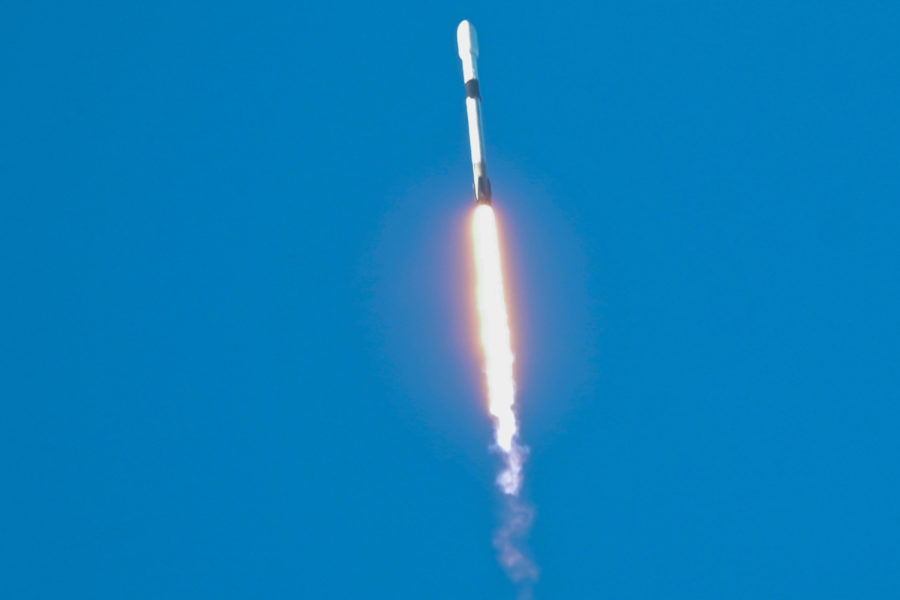The Space Development Agency successfully got its Tranche 0 satellites off the ground April 2, two and half years after it first awarded the contracts.
Those two and a half years included a few extra days of delays, but when a SpaceX rocket lifted off from Vandenberg Space Force Base carrying 10 satellites—eight for transporting and relaying data and two for missile tracking—it put SDA’s vision for the future into orbit for the first time. Tranche 0 is part of Proliferated Warfighter Space Architecture (PWSA). The April 2 shot was the SDA’s first dedicated launch and the first launch of PWSA. Beyond the new names and acronyms, the SDA hopes to inject something else new into the DOD: speed.
“We were established to be the disrupter to come up with a completely new way to do space architecture,” SDA director Derek M. Tournear said April 3.
“By hook or by crook, we will get new capabilities fielded in space every two years,” Tournear said at the Navy League’s Sea-Air-Space conference in National Harbor, Md.
The SDA, now part of the Space Force, eventually wants to put hundreds of small satellites in orbit as part of proliferated constellations. The Space Force as a whole hopes to make launching satellites an essential but commonplace part of the Department of Defense—just like the service itself. But SDA will have to make compromises the U.S. government has previously been reluctant to make.
“That means that we cannot go with what is the most exquisite capability,” Tournear said. “We’re going to go with what we can deliver in two years based on what is commoditized technology, what industry can deliver, and that’s what we’re going to push forward. We will put schedule above costs, and we’ll put cost above performance to make sure we hit those timelines.”
The first tranche is what the SDA calls the Warfighter Immersion Layer to give the DOD a way to test out the new systems. The majority of the Tranche 0 satellites, 20 of 28, are for data transport using Link 16, the military’s standard tactical data link. The SDA hopes all of Tranche 0 will be in orbit by June.
The new satellites will “demonstrate low latency connectivity for laser communication” as well as the first ever use of the Link 16 tactical data network directly from space, Tournear said. Bringing Link 16 into space would allow service members to communicate further—important in the vast Indo-Pacific region that is the DOD’s new primary focus.
“Historically, they use their tactical radios to conduct operations and they’ve been limited to a range of a few hundred nautical miles,” Tournear said. “Well, that’s fine if you’re conducting limited operations. But if you’re going to start to prosecute hundreds and hundreds of targets rapidly, you’re going to have to pull in targeteers from all over the globe. Being able to tie into the space transport layer allows you to do that. So you can have people targeting distributed across the globe in a very resilient fashion and send those targeting solutions.”
The other element of PWSA—at least for now—is missile tracking. While Tranche 0 will first track test objects, Tournear says the SDA wants to eventually tackle complex threats.
“We’re going to field a constellation that does advanced missile tracking,” Tournear said. “You’ve heard a lot about these advanced hypersonic glide vehicles, hypersonic weapons. We’ll actually be able to track them so that we can send firing solutions.”
For now, those are just the SDA’s plans. But in less than two years—under the agency’s self-imposed deadline—the SDA’s Tranche 1 will become a new capability available to the U.S. military.
“Tranche 1, which begins launching in just 18 months, will actually be the first initial warfighting capability,” Tournear said “At that point, so now we’re talking in 2025, we’ll be able to have the ability to take the fight to regional theater and bring these technologies to bear.”
